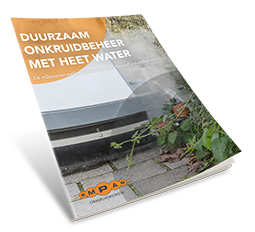Combating the oak processionary
The oak processionary caterpillar looks like any other caterpillar, but the reality is quite different. People and animals who come into contact with its defensive bristles can expect to endure extreme misery. Local authorities and green contractors have long been grappling with management of oak processionary caterpillars, but there’s new hope for people and animals.
The oak processionary plague
The plague of oak processionary caterpillars continues at pace. Back in 1997, there was hope when the species’ population numbers appeared to collapse, but that hope proved misplaced when numbers began to increase again. The problem is now referred to as a plague and has been going on for many years – with no apparent end in sight. Strange in itself, considering that the species originates in southern and eastern Europe. It would seem that the caterpillar has found a new home, and has no desire to leave.
Defensive bristles cause unwanted complaints
The defensive bristles of the caterpillar are responsible for unpleasant, unwanted physical complaints that occur following contact with the skin. Itching and rash are the most common reactions, but some people also suffer swollen and irritated eyes. In extreme cases of contact with the bristles, vomiting and dizziness may occur. All in all, the oak processionary and its bristles are no fun.
Combating the oak processionary with boiling water
The solution to the problem is boiling water. The caterpillar’s body consists mostly of protein cells. At 50°C, protein turns to a solid, so a caterpillar drenched in boiling water at around 100°C will solidify fairly quickly. Caterpillars appear to fossilise when doused in boiling water, and the great thing is that after treatment, the bristles cease to irritate the skin. The boiling water method is cleaner and more sustainable than chemical or bacterial treatment.
Preventive management of the oak processionary with boiling water
Boiling water is also very effective means of preventive management. Pouring boiling water into nests full of caterpillars, skins, faeces and hair triggers a transformation into a dark-coloured goo. Dealing with the egg later in the year prevents the caterpillars from attacking whole oak trees and spares people and animals a world of pain. Attacking the caterpillars only is not enough – pour boiling water over the eggs too!
Combating the oak processionary with hot water units
Hot water units from Empas can help local authorities and green contractors to manage the oak processionary with boiling water. We have recently completed testing of a wide range of machines that allow you to effectively ‘boil’ the caterpillars. The results of the tests speak for themselves – not one single caterpillar managed to survive being drenched in water heated to around 100°C. The use of boiling water is not harmful to the trees, according to the research results of the German company Martin Maschinen Vertrieb. In addition, the other life in the tree stays unaffected. Are you looking to rid yourself of the oak processionary? No need to look further – please get in touch to discuss the options.






